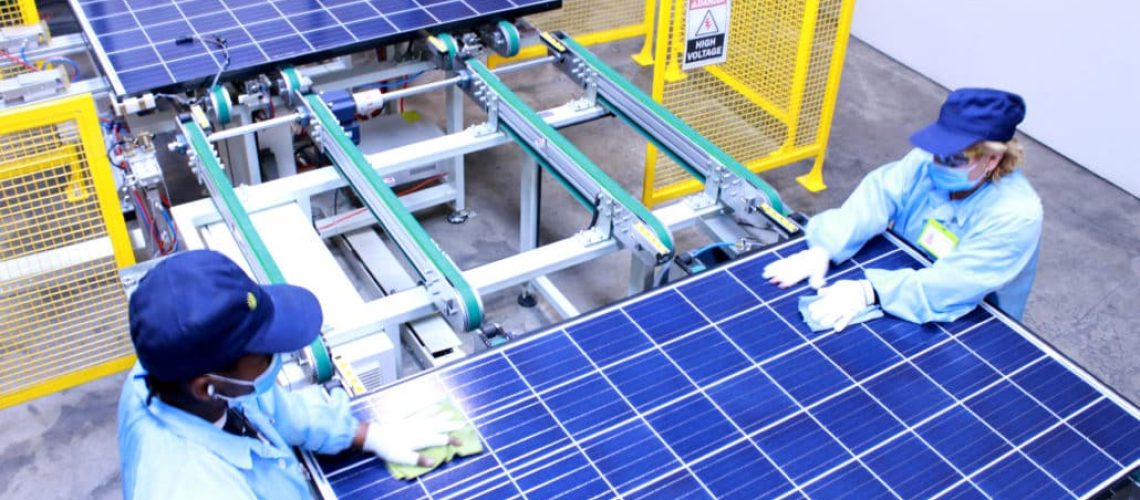Today the Dept. of Treasury has released long-awaited further guidance concerning the domestic content bonus within the Inflation Reduction Act. Solar developers and installers that source iron and steel products and certain manufactured products from domestic producers can receive up to a 10% bonus to the investment tax credit (ITC) or production tax credit (PTC) when completing projects. Projects can receive the domestic bonus if they meet the requirements and are less than 1 MWAC, began construction before Jan. 29, 2023, or meet prevailing wage and apprenticeship requirements.

SunSpark USA
Treasury today further clarified project descriptions and created a new elective safe harbor that allows developers to rely on Dept. of Energy-provided default cost percentages to determine eligibility for the bonus credit.
No major changes to previously announced requirements were revealed. As a review:
The domestic content bonus applies to projects built using required amounts of domestic-produced steel, iron and manufactured products. A product is considered to be “Made-in-USA” under this rule if 40% of the cost to manufacture it (when used on projects beginning construction before 2025) was completed within the United States. That rule increases to 55% for projects beginning construction after 2026.
To receive the bonus, all steel and iron manufacturing processes used in significant structural components must take place in the United States. This requirement is not applicable for steel or iron subcomponents (such as nuts, bolts, screws and clamps). Racking, piles, ground screws and rebar used in foundations are considered to be “steel and iron products.”
Solar trackers, solar panels and inverters are classified under the “manufactured products” designation. Project developers can follow certain adjusted percentages of qualifying components to meet the domestic content bonus. American-made battery packs (including cells, packaging, thermal management system and BMS), battery enclosures and inverters can also receive this adder.
The default cost percentages can be seen in the charts below. Solar projects are split among four categories: tracker projects, fixed-tilt ground-mounts, rooftop projects using MLPE, and rooftop projects using string inverters.
Battery projects are split between two categories: Grid-scale (greater than 1 MWh) and distributed (less than 1 MWh).
When electing for the safe harbor, projects featuring both solar and storage components will use a multiplier to accommodate the different nameplate capacities (solar PV being kilowatts vs. storage being kilowatt-hours). Tracker projects will multiply by 0.57, fixed-tilt projects by 0.75, MLPE rooftop projects by 0.69, and string inverter rooftop projects by 0.99.
Treasury and IRS will continue to consider stakeholder comments and plan to issue further domestic content guidance to address issues not in the scope of this guidance, including possible offshore wind requirements. The government is also evaluating potential options to incentivize domestic manufacturing of solar wafers, an ask made by Senate Democrats earlier this year.
Abigail Ross Hopper, president and CEO of the Solar Energy Industries Association (SEIA), provided a statement: “The added clarity on the domestic content bonus credit has been a top SEIA priority because it’s crucial to give manufacturers the certainty they need to invest in American communities. We appreciate the administration’s approach to making sure this bonus credit helps downstream manufacturers in the near term as we ramp up production of upstream components over the next several years. We also want to commend the administration for taking initial steps to clarify how residential and commercial installations can qualify for these incentives.”
Mike Carr, Executive Director of the Solar Energy Manufacturers for America (SEMA) Coalition, commented on the increased focus on domestic wafer manufacturing: “We are also encouraged to see the Treasury Dept. recognize the centrality of ‘the IRA’s goals of incentivizing U.S. solar manufacturing, including solar wafer production’ as they work to develop the long term guidance for this credit. Swiftly and successfully converting this intent to domestic content guidance is critical to investments in major facilities supporting thousands of jobs, so we look forward to working with the administration to expeditiously produce workable guidance as soon as possible. Breaking the Chinese cartel on wafer manufacturing is at the core of a sustainable U.S. solar manufacturing supply chain and we are very pleased to see the administration take action to address this fundamental dynamic.”



